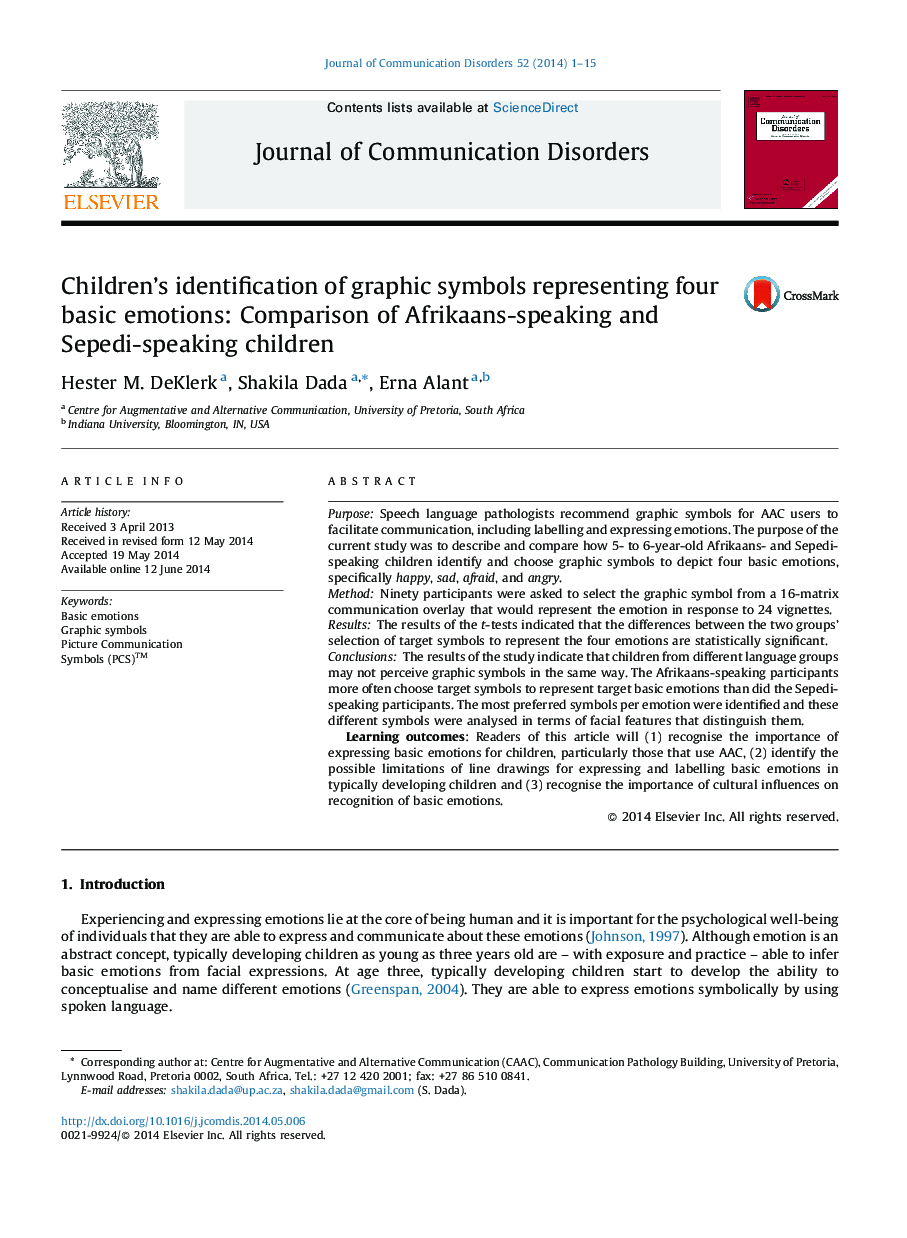| Article ID | Journal | Published Year | Pages | File Type |
|---|---|---|---|---|
| 910794 | Journal of Communication Disorders | 2014 | 15 Pages |
•Afrikaans- and Sepedi-speaking children choose graphic symbols to depict basic emotions.•Children selected a PCS symbol from an overlay in response to a vignette.•Afrikaans-speaking group selected more target symbols than the Sepedi-speaking group.•Groups agreed more for symbols representing happy, followed by sad, anger and fear.•Most preferred symbols are analysed in terms of facial features that distinguish them.
PurposeSpeech language pathologists recommend graphic symbols for AAC users to facilitate communication, including labelling and expressing emotions. The purpose of the current study was to describe and compare how 5- to 6-year-old Afrikaans- and Sepedi-speaking children identify and choose graphic symbols to depict four basic emotions, specifically happy, sad, afraid, and angry.MethodNinety participants were asked to select the graphic symbol from a 16-matrix communication overlay that would represent the emotion in response to 24 vignettes.ResultsThe results of the t-tests indicated that the differences between the two groups’ selection of target symbols to represent the four emotions are statistically significant.ConclusionsThe results of the study indicate that children from different language groups may not perceive graphic symbols in the same way. The Afrikaans-speaking participants more often choose target symbols to represent target basic emotions than did the Sepedi-speaking participants. The most preferred symbols per emotion were identified and these different symbols were analysed in terms of facial features that distinguish them.Learning outcomes: Readers of this article will (1) recognise the importance of expressing basic emotions for children, particularly those that use AAC, (2) identify the possible limitations of line drawings for expressing and labelling basic emotions in typically developing children and (3) recognise the importance of cultural influences on recognition of basic emotions.
